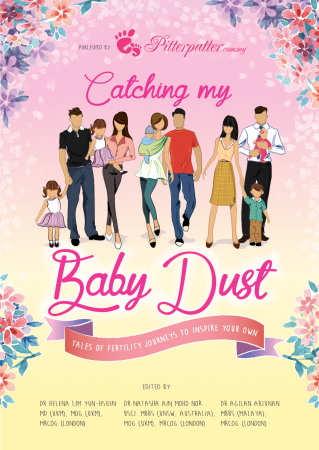Oral and Dental Care
 by Dr Cindy Wu
by Dr Cindy Wu
Dental Surgeon
BDSc from University of Melbourne, Australia
MSc (Aesthetic Dentistry) from University of London, UK
Sunway Medical Centre
1.My Chloe is one year old and is a very bright child. But she only has two teeth. Is this normal?
Babies typically get their first central incisor by 6 months old, followed by lateral incisors. By 16 to 20 months old, they tend to get canines and would have approximately 6 teeth. By 23 to 30 months old, the remaining molars should be erupted and there should be a total of 20 baby teeth.
This is of course a very rough guide. The truth is that some children will get their teeth faster and later than others. There are medical conditions which have dental implications. However, if your pediatrician finds Chloe to be medically healthy and she is otherwise feeding well, then her teeth should come through in due time.
2.Jonny is two and he still refuses for us to brush his teeth. We have tried all sorts of toothbrushes and toothpaste without any success. Can we just leave the brushing till he is older?
Plaque may accumulate on tooth surface as soon as it comes through the gums, even if the child is not yet on solid food. Most milk powder contains sucrose which may cause dental decay.
Therefore, all attempts should be made to introduce brushing as a daily routine as early as possible. It is not unusual for parents to face the challenge of trying to put a tooth brush in a toddler’s mouth which is clammed tight with plain refusal.
There are many reasons why a child dislikes brushing. Often parents have chosen a toothbrush which is too big for their child’s mouth and the harsh bristles can hurt his gums.
So always look for the smallest and softest brush you can find. Never mind the packet indicates it’s for a 1 year-old and your Jonny is two already. Another reason may be inappropriate brushing technique. Always brush your child’s teeth in a well-lit room so you can see where you are brushing.
Brush slowly with small circular movements. Maintain an encouraging tone of voice when you brush his teeth. Distract him with a story or a song. Get him to brush for himself while you brush yours to make it a family fun fair before bedtime.
If all fails, wrap wet cotton gauze around your finger and clean all tooth surfaces. Remember to reach right to the back of the mouth as those baby molars can easily trap food and become cavitated.
3.Sarah is three but still doesn’t know how to spit out her tooth paste. I have heard that ingesting toothpaste is bad for a child. Should I stop giving her toothpaste?
Dentists get very concerned when children regularly swallow tooth paste. Fluoride contained in normal toothpaste, which is otherwise very effective at fighting tooth decay, can cause fluorosis in adult teeth if ingested on a daily basis.
Fluorosis is the mottling appearance on tooth surface which may be brown or white in colour, causing an aesthetic concern which is difficult to rectify. There is toothpaste on the market which is fluoride-free. Give Sarah tooth paste without fluoride. Revert back to age appropriate fluoride tooth paste when you can be sure that she can spit it out.
4.Our Michael is a very mature four years old. He eats his meals well and drinks water and juices from a cup. But he must go to sleep with a bottle of milk. We’ve tried to take it away and he would wail and scream till we give up and let him have the bottle. Lately, we’ve noticed that his teeth have brown and black spots. We are afraid that they might be tooth decay. What can we do?
Almost all milk formula sold on the market contains sucrose which can cause tooth decay. Nursing bottle caries is a term which is given to tooth decay caused by children sleeping with a bottle of milk. It’s typically characterized by rampant decay affecting most of front teeth which are immersed in milk during the night. The damage can be devastating.
Therefore, this is definitely a habit that has to be curbed as soon as possible. Talk to Michael about the consequence of tooth decay. Work out an alternative to night bottle. Choose a special cup for the milk before bedtime. Make it special by letting him drink it through straw.
This should be followed by brushing teeth with tooth paste. If he still wants the comfort of a bottle in hand at night, give him one filled with water. If this method isn’t possible, try diluting the night feed with water. Gradually reduce the milk and water ratio until it’s so thin that it loses its satisfying taste. Then re-introduce the milk in a cup before bedtime routine.
5.I am a very strict parent and do not buy sweets for my children. However, I get very frustrated when Adam and Amanda come home from kindergarten with half emptied party bags. Sometimes I get embarrassed when I don’t allow them to have cake at friend’s birthday parties. Am I being paranoid?
It is absolutely alright to allow children the occasional indulgence, just as we adults need sometimes. What’s more important is to teach our children how to control themselves when they are in a public setting where they see all the other children are having sweets.
They should be encouraged to keep the party bags in their bags until they have reached home and showed you the contents. You may choose to take out items such as sticky or hard candies, but let them have the healthier ones like raisins or crackers.
Giving them permission to have slices of cake at birthday parties is good as it allows them to have fun with friends. Try to persuade them to switch the cordial or soft drinks with water. Water will help to wash down the sweet, sticky treats and dilute the sugary remnants in their mouths.
6.I took Jane to the dentist’s for a check-up and he informed me that my child has three cavities. I was shocked. She has never complained of toothache and does not really have a sweet tooth. How can she have so much tooth decay?
Sugar comes in all forms and sizes. In today’s diet where most families rely heavily on processed foods, there’s hidden sugar everywhere. Does Jane have Vitagen or yogurt drink? Is the fruit juice she drinks sugar free? Does she have white bread buns or cream crackers?
We may only realize how much sugar is in these foods once we read the labels and ingredients. Cookies and a packet of chocolate drink may be a fast and easy way to feed a hungry tummy after school. However, freshly cut fruits, a cup of fresh milk or cheese would definitely promote a cavity free mouth.
7.We know our Max has a lot of holes in his teeth. They are so severe that many of his teeth are broken down to gum lines. We have taken him to see many dentists and they all recommend us to get his teeth treated under general anesthetic. But we are worried that the procedure will be too much for a four year-old. What should we do?
It sounds like Max may need to have multiple dental restorations and even possibly a few extractions. Both procedures require long chair-side time and the use of injection. Sometimes one appointment isn’t enough if there’s too much dental problem.
Therefore, a general anesthetic session where dental concerns may be addressed at the same time is a good option to consider. Anesthetists are very experienced at administering appropriate doses of general anesthesia. They would also perform a thorough pre-op medical check for your child. The hospital policy usually allows parents to accompany their children into the operating theatre until the general anesthesia takes effect.
Once your child is asleep, your dentist would be able to place dental fillings, perform scaling or extraction very fast and efficiently. Your child would wake up shortly after the procedure is completed. Local anesthetics would be given during the procedure so your child wouldn’t wake up with pain. Medications would be prescribed to minimize post-operative pain and infection. Everything can be done as a day procedure.
8.My dentist has to put two fillings in Danny’s six-old molars recently. She suggested putting fissure sealants on the other two molars to prevent them from decay in the future. What are they?
Fissure sealants are a tooth-colored, protective layer which your dentist placed in the adult premolars and molars. These teeth sometimes may have very deep pits and fissures on the biting surfaces which can trap food debris and the anatomy makes it impossible to clean with a toothbrush.
Tooth decay usually would start from these pits and fissures and it may be undetected until a cavity becomes visible. Fissure sealants certainly have been proven to be a very effective preventive treatment.







